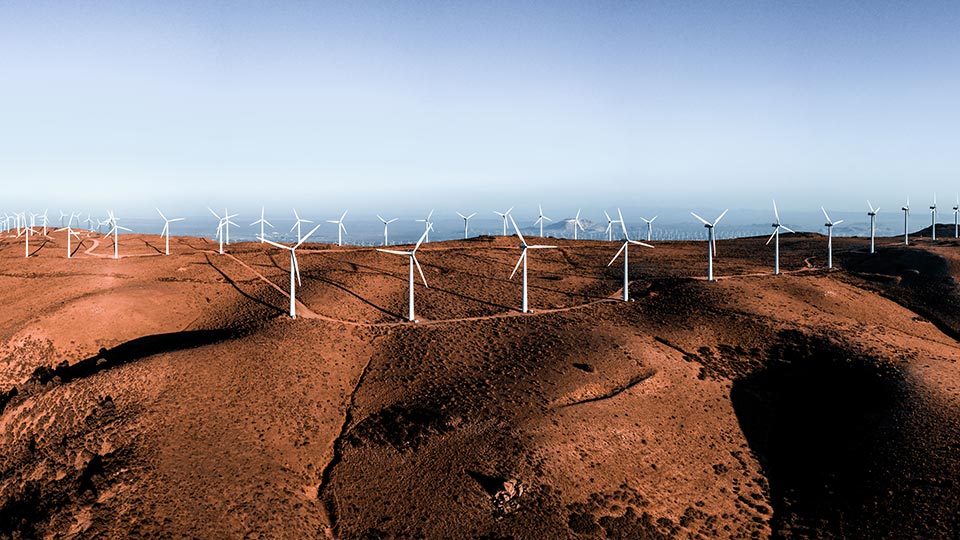The Holden & Partners 2023 investment team round up

We are already well into the new year, here Paul Dennis and the investment team round off 2023 and look at our jumping off point for 2024. Scroll down for the full article.
Interest Rates, Inflation & Fixed Income
Inflation eased in major economies due to factors like lower energy prices and normalised supply chains. The Federal Reserve’s dovish stance in Q4 led to positive market performance, especially in fixed income.
US
Despite concerns, the US economy expanded by 4.9% in Q3. Dovish signals from the Federal Reserve boosted stocks, particularly growth stocks. The Nasdaq surged 53.8%.
Europe
Europe faced challenges, with Germany contracting 0.1% in Q3. Despite economic woes, stock markets like the Dax climbed 19.1%. Analysts note potential opportunities with a 30% discount to the S&P 500.
Asia
China’s economic recovery fell short, contributing to a volatile year. Japan’s Nikkei stood out with a 27.6% return, driven by improved corporate governance.
Middle East
Conflicts in the Middle East and shipping disruptions in the Red Sea are cause for concern, impacting global trade.
UK
The UK’s GDP growth remained flat, defying recession predictions. Despite a lagging FTSE 100, the FTSE 250 finished 4.4% up, driven by hopes of 2024 interest rate cuts.
Alternatives
The commodities sector faced challenges, with the Bloomberg Commodity Index returning -13.1%. Property sector saw respite with expectations of 2024 interest rate cuts.
Sustainability
The FCA introduced Sustainability Disclosure Requirements, adding a ‘Sustainability Mixed Goals’ label. Around 300 UK funds are expected to adopt labels by the end of 2024.
Performance Review
Portfolio adjustments included increased exposure to US equities and Japanese equities.
Interest Rates, Inflation & Fixed Income
Although we entered the year with high inflation rates, saw continued monetary tightening from major central banks throughout, and encountered some shocks along the way (conflicts, regional banking crisis, to name a couple), on reflection, it would be fair to say that markets and the economy surprised to the upside in 2023.
The high inflation rates gradually fell towards target for major economies (although there is still some way to go – the last 1-2% is often the trickiest to reduce…). The easing of energy prices and profit-led inflation, normalisation of supply chains, along with general base effects, have led to an easing of inflation. And while credit conditions appeared to have tightened, the resilient labour markets we have seen up to now might suggest that we have yet to see the full impact of the aggressive monetary tightening. As we know, it can take months/years for the full effects to appear.
Following these promising inflation prints, dovish tones from Chair Jerome Powell of the Federal Reserve injected some confidence into markets, leading to strong performance in Q4 for most asset classes. Having previously pushed the ‘higher for longer’ narrative, the shift in tone gave further confirmation that interest rates might have peaked and brought expectations of future interest rate cuts forward. Various bond yields across the board fell from the previous highs in the final quarter of the year, giving much awaited gains to most segments of the fixed income market.
US
Despite worries about inflation, rising interest rates and a regional banking crisis, the US economy remained resilient with the most recent GDP figures showing the economy expanded an annualised 4.9% in the third quarter.1 Headline and core inflation cooled and while the Federal Reserve (Fed) raised interest rates four times over the year, Fed officials signalled that no additional interest rate increases are expected at their December meeting.2
The more resilient-than-expected economy, cooling inflation and likely peak in interest rates provided the catalyst for a much-needed comeback for US stocks. Growth stocks achieved a big rebound, buoyed by talks of interest rate cuts and the excitement around AI and its future benefits which arose following the increased popularity of Open AI’s ChatGPT. The Nasdaq, an index predominantly made up of these growth tech stocks that benefit from low interest rates (discount rates) gained 53.8% 3 over the year and surpassed an all-time high. This highlights how hard it is to predict/time the market and the importance of remaining invested over the long term to smooth out volatility and ensure growth isn’t missed by being out of the market.
The S&P 500 posted gains of 24.2% 4 over 2023, reaching an all-time high. The blue-chip Dow Jones Industrial Average jumped 13.7%. 5 While these gains are impressive, market breadth for most of the year was low meaning returns were driven by a small percentage of the market, namely the ‘Magnificent-7’ stocks – Apple, Amazon, Alphabet (Google), Nvidia, Meta, Microsoft, and Tesla. About 70% of the S&P 500 components underperformed the index in 2023, with roughly a third falling in the year. 6
The US Dollar index (DXY) ended 2023 with its first yearly loss since 2020 following an ‘everything’ rally from November which saw investors move out of safe havens and into riskier corners of the market after the Fed’s dovish pivot.7 Furthermore, following strict US sanctions on Russia and Iran, other nations worldwide have started to wean themselves off US Dollar dependence by diversifying away from US Treasury bonds, which would require transacting in Dollars, into gold, oil and other strategic reserves.8
Europe
The start of the year began with fears of a severe recession across the continent as consequential sanctions on Russia forced Putin to reduce energy flows to Europe which many believed would lead to an energy crisis. Thankfully a mild winter and imports of liquefied natural gas (LNG) predominately from the US meant this didn’t come to fruition. Despite this, European countries haven’t been as resilient as their US counterparty, especially Germany, Europe’s largest economy. The most recent GDP figures show the German economy contracted 0.1% in the third quarter of 2023 with private consumer spending declining 0.3% highlighting the squeeze on consumers’ budgets following high inflation and the subsequent interest rate hikes.9 Regardless of the economic woes, the Dax, Germany’s main stock market index, climbed 19.1% over the year 10 highlighting the common disconnect between the economy and the stock market.
It wasn’t only in Germany where equity returns were impressive, the Italian FTSE MIB and the Spanish IBEX ratcheted returns of 25.6% 11 and 20.7% 12, respectively. There may be more good times to come for investors in European shares with an increasing number of analysts and commentators highlighting the approximately 30% discount to the S&P 500. While this is no guarantee to future returns, other factors like the fact approximately 60% of European revenue comes from outside of Europe and that there is less concentration risk help support this view.13
The atrocities in Ukraine continued in 2023, although there were hopes of a turning point when Yevgeny Prigozhin, a Russian oligarch and mercenary leader, launched a rebellion threatening to overthrow the Russian government. This didn’t come to reality; however, Putin’s illusion of invincibility was dented. Compared to 2022, energy price volatility in 2023 was subdued, partly due to the mild winter conditions which suppressed demand. The weather conditions, diversity of gas imports, expansion of LNG regasification capacity, and renewable energy put Europe in a great position to deal with any negative shocks. 14 As always though, in this ever-polarising world, sabotage or disruptions could have severe consequences.
Asia / Emerging Markets
Investors went into the year expecting a Chinese COVID recovery that would boost global asset prices and economic conditions, much needed after 2022’s horror performance. The recovery didn’t arrive, instead, the world’s second-largest economy experienced a bout of volatility throughout the year – this seemingly didn’t affect global asset prices as much as most were expecting, however. The ongoing property crisis and deflationary environment have dented consumer and business confidence. Abroad, investors have grown cautious over Xi Jinping’s obsession with Taiwan and what that could mean for foreign investment in China, foreign direct investment (FDI) is falling close to 10% year-on-year as a result.15 Equity investors hadn’t fared much better with the CSI 300 down 11.4% over the year and now down around 40% from the peak in 2021.16 This put more pain on the Chinese consumer given the restrictions they face investing abroad.
Across the East China Sea, Japan’s Nikkei 225 was the standout performer among major Asian equity indices in 2023 posting a 27.6% return. 17 A strong driver of these returns, among other things, was the improving corporate governance landscape. Over the past decade, cash on Japanese-listed companies’ balance sheets has been very high and has tended to be held onto causing valuations to slump. To combat this, the Tokyo Stock Exchange (TSE) requested that listed companies with a price-to-book (P/B) ratio below 1 disclose actions to increase it to at least 118 – a low P/B is usually a sign a company is not using capital efficiently. 19 Subsequently, share buybacks hit a peak in May 20 helping fuel the move higher in Japanese equities we saw in 2023.
Sadly, 2023 brought more conflicts and human suffering in the Middle East as war broke out between Israel and Hamas. While the immediate effects of the war on markets were muted, long-term issues have recently come into play as Iranian-backed Houthi rebels (supporters of Hamas) attack global shipping containers sailing through the Red Sea and Suez Canal, a major shipping route that accounts for nearly 12% of global trade. 21 Many shipping companies have halted all Red Sea shipping, a move governments will want to ensure isn’t sustained in 2024, especially as inflation has begun to cool and elections in major global economies are around the corner.
In Argentina, the right-wing coalition led by eccentric Javier Milei won the country’s general election, although his party only holds 38 out of 257 lower house seats and 7 of 72 in the Senate. Argentina has been gripped by surging inflation, a falling Peso and increasing poverty, so it is no surprise Argentinians opted for a change from previous leftist policies to try to revitalise the economy.
UK
After holding up well in 2022, the FTSE 100 unsurprisingly lagged, returning just 3.8% over the year (the effect of dividends will boost the total return slightly)22 . The indexes lack of technology names and exposure to the energy sector proved a drag on performance, and the relatively stronger Pound seen over the year has not helped the various stocks that collectively earn most of their revenues from abroad. Despite struggling in the last year or so, the FTSE 250 finished the year 4.4% up following an end of year surge fuelled by hopes of interest rate cuts sooner in 2024 than initially expected.23
While the UK appears to have avoided several definitions of recession in 2023, GDP growth has been flat throughout the year. This may not scream ‘good news’, but with many predicting a recession at the beginning of the year, this has perhaps shown us that the economy is more resilient than first thought. Labour markets have also remained tight despite economic headwinds. Real wage growth turned positive in the later months, and unemployment (should you place any trust in the data and response rates) remained largely unchanged at 4.2% .24
Alternatives
After being one of the few sectors to provide positive returns in 2022, the commodities sector has very much struggled in 2023, with the Bloomberg Commodity Index returning -13.1% in Pound Sterling.25 After nearly reaching $95 a barrel earlier in the year, the price of Brent Crude Oil ended the year below $80 despite the continued conflict in the Middle East and the threat of OPEC production cuts.26 Natural gas prices also eased, following robust storage levels in Europe and expectations of relative mild temperatures at the start of 2024.
While returns for the property sector were subdued for large parts of the year, mostly due to monetary tightening and talks of ‘higher for longer’, this interest rate-sensitive sector saw some respite in the final quarter of year with expectations of interest rate cuts in 2024. In Pound Sterling terms the FTSE Nareit All REITS returned 5.2%. 27
Sustainability
At the end of November, the Financial Conduct Authority (FCA) treated us with a policy statement giving the final rules and guidance on Sustainability Disclosure Requirements (SDR) and investment labels, aimed at helping consumers navigate the market for sustainable investment products. Following a lengthy consultation period, several changes were made to the original proposals due to the feedback received. A fourth label, ‘Sustainability Mixed Goals’ was added due to concerns around multi-asset labelling, which might feature combinations of the other three labels: ‘Sustainability Improvers’, ‘Sustainability Focus’, and ‘Sustainability Impact’. An early analysis carried out by Morningstar estimates that about 300 UK funds will opt for a label by the end of 2024. With the ‘Sustainability Focus’ label being the dominant one.28
Performance review
As always we consistently monitor the landscape and made a number of key moves:
- We increased exposure to US Equities at the beginning of 2023. This performed well as the US equity markets showed strong returns.
- Japanese equities were increased in three of our five risk levels. This move benefitted from the performance of the Japanese stock market, one of the best performing globally.
- Gold was removed in favour of high yield-bearing assets. iShares Physical Gold returned 7.25% vs State Street High Yield Index 12.07%.
- Overall equity exposure was reduced in favour of greater exposure to credit risk. Whilst this performed well, we didn’t expect the equity markets to perform how they did in the last couple of months. It was still positive for returns though.
- We pushed duration of our fixed income out by c1 year on average. Whilst this held out well in the first three quarters the risk on rally that we saw in the last quarter favoured longer duration/risk assets.
If you would like more information on any of the topics included here, talk to your Holden & Partners financial adviser.
1. https://tradingeconomics.com/united-states/gdp-growth
2. https://www.federalreserve.gov/monetarypolicy/files/fomcprojtabl20231213.pdf
3. https://app.koyfin.com/charts/gm/id-ld50z1
4. https://app.koyfin.com/charts/gm/id-5rg2y9
5. https://app.koyfin.com/charts/gm/id-yjl5rm
7. https://www.federalreserve.gov/monetarypolicy/files/fomcprojtabl20231213.pdf
9. https://tradingeconomics.com/germany/gdp-growth
10. https://app.koyfin.com/charts/gm/id-1q7cfl
11. https://app.koyfin.com/charts/gm/id-bb6gkf
12. https://app.koyfin.com/charts/gm/id-uadywg
13. https://www.thelykeion.com/life-after-the-big-melt-up/
14. https://www.bruegel.org/analysis/european-union-ready-2023-24-winter-gas-season
16. https://app.koyfin.com/charts/gm/id-1fp3i7
17. https://app.koyfin.com/charts/gm/id-xo6mmc
19. https://global.matthewsasia.com/insights/japan/2023/emerging-japan/
20. https://global.matthewsasia.com/insights/japan/2023/emerging-japan/
22. Morningstar FTSE 100 PR GBP 01/01/2023 – 31/12/2023: 3.78%
23. Morningstar FTSE 250 PR GBP 01/01/2023 – 31/12/2023: 4.44%
25. Morningstar Bloomberg Commodity TR GBP 01/01/2023 – 31/12/2023: -13.09%
26. https://tradingeconomics.com/commodity/brent-crude-oil
27. Morningstar FTSE Nareit All REITs TR GBP 01/01/2023 – 31/12/2023: 5.2%










